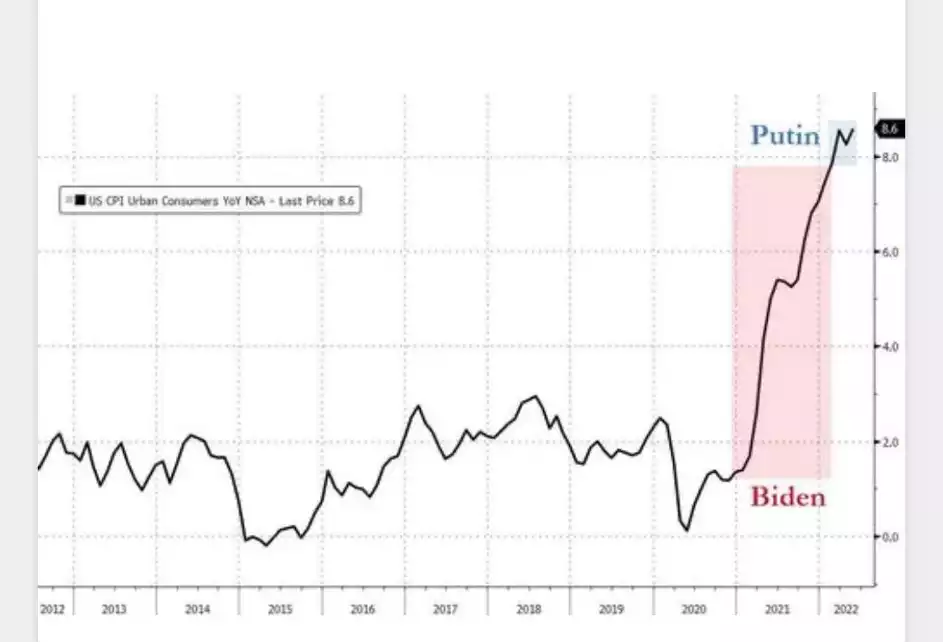Powell throws Biden under the Inflation Bus
News
|
Posted 24/06/2022
|
9900
In late May, Biden argued that the task of fighting price increases was the responsibility of the Federal Reserve. In what has now become an often quoted phrase, the President implored the public to maintain the independence of the Fed.
“My plan is to address inflation. That starts with a simple proposition: respect the Fed, respect the Fed’s independence, which I have done and will continue to do.” (31/5/22)
The nation has been rocked, along with most of the world, with rapidly increasing fuel prices amid a more general inflationary trend last seen in the late 1970s. There are talks now of suspending the 18-cent federal gas tax for the next 90 days in a bid to reign in cost of living pressures. Fuel costs bleed into every aspect of consumption leading to greater inflation and reduced purchasing power of currencies. The only question is when precious metals will pop in this highly inflationary environment.
In a Capitol Hill hearing Powell was asked yesterday: “Would you say that the war in Ukraine is the primary driver of inflation in America?” Fed Chair Jerome Powell responded: “No. Inflation was high before, certainly before the war in Ukraine broke out.”

The President speaking at the White House later in the day revealed that Congress knew that sanctions would lead to higher gas prices. The pain at the fuel pump is being explained as the cost of ‘defending freedom’. Whatever knowledge the White House had of the effect of sanctions would have on fuel prices, and by extension inflation, these are clearly exacerbating other long standing inflationary pressures.
Biden speaking on Tuesday, argued that the sanctions are designed to ensure that the pain is targeted at the Russian economy. Perhaps counter intuitively, the Russian Ruble has continued to strengthen against the USD, now reaching 54:1 after starting at 75:1 prior to the escalation of hostilities in Ukraine. Russia also reporting record windfalls from higher commodity prices that they are selling to non-NATO countries such as China and India. One wonders how this situation can be resolved, but asking US based energy companies to drill more but take fewer profits may be one of the less appealing options for Oil and Gas corporations.
You could say that the current inflation comes with the cheque for the past ‘free lunches’. Governments around the world have been able to keep low to zero interest rates while heading further and further into debt. As the debts mount up, the incentive to keep interest rates artificially low only grows more tempting. With more than $30 trillion of on balance debt in the US alone, increases in repayment rates cost Janet Yellen at the Treasury and each taxpayer on the hook for more than $91,000 (link).
While there are no crystal balls, the macro set up is very bullish for precious metals that sit outside of the system that is rapidly deteriorating. On Monday we covered the commitment of traders showing net shorts at record lows not seen since May 2019. Yesterday we saw how the 60/40 model of stocks and bonds is crumbling as both asset classes have faltered in 2022. As we move into the second half of 2022, we may well see talking heads on CNBC talking of TINA (there is no alternative), but they will be looking to commodities and precious metals in particular as the way out.